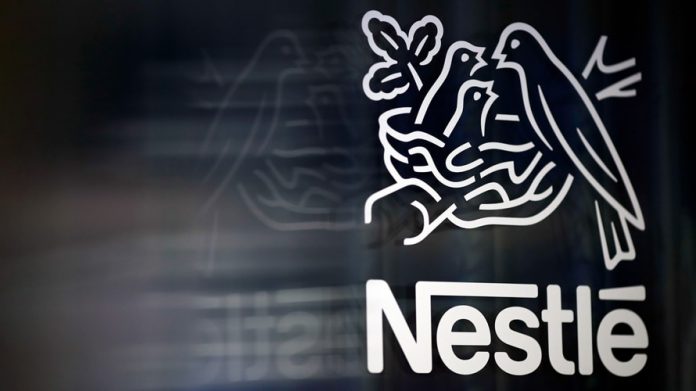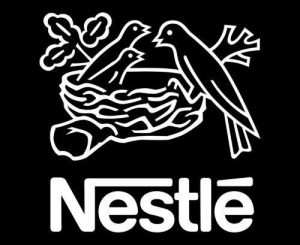This article is written by Poonam Nahar, pursuing a Diploma in Intellectual Property, Media, and Entertainment Laws from Lawsikho.com.
Table of Contents
Introduction
Nestlé has become the world’s largest food and beverage producer and branched out into pet care, with a little pharmaceutical thrown in. Hence, Nestle is one of the leading brands in the world. For over 150 years, Nestlé has been applying expertise in health, nutrition, and wellness to help people, families and pets to live happier with healthier lives. Nestlé constantly explores and aims to push the boundaries of what is possible with foods, beverages, and nutritional health solutions. Nestlé unlocked the power of food to enhance the quality of life for everyone, today and for generations to come. Nestlé, the Good food, Good Life Company. Nestlé believes in the power of food to enhance life.
Intellectual property is a bundle of exclusive rights over creations of the mind, both in a commercial and artistic manner which includes ‘trademarks’. The trademark includes symbols, logo, word, colour etc. which distinguishes one enterprise from that of another. A trademark exclusively identifies a product that belongs to a specific company and that is recognized as a brand that is ownership of the company. Trademarks may or may not be registered and if registered or in the process then are denoted by the ® and ™ symbols respectively. To market brand names, trademarks are also used as an effective way. In fact, the power of branding in commerce is critical and can fill up volumes, and the use of brands in marketing is fabled. Therefore, protection of its logo is important to avoid Counterfeiting, infringing of products etc.
In this article, we will understand Nestle and its logo evolution, the importance of protection, IP protection of Nestlé’s logo, Madrid System of International Registration of Trademarks, Nice classification, important terms with reference to the trademark of Nestle.
Evolution of Nestlé’s logo
One of the first Swiss manufacturers “Henri Nestlé” built up a brand with the logo. He was the one who recognized the importance of branding from the very beginning. The original Nestlé trademark was based on his family’s coat of arms, which featured a single bird sitting on a nest on an oak branch. This was a reference to the family’s crest, which means ‘nest’ in German. Although it has been updated over the years, it remains the recognizable and distinctive logo of Nestlé today. Nestle is a legend, so is its visual identity. The badge, known in every corner of the world, has undergone six redesigns throughout the long company’s history, but its main symbol remains unchanged for more than a century. The Brand is treated as an asset of the applicant i.e. Nestles Products Limited. For over more than 150 years, Nestle has modified its logo at least six times throughout its history. Here below is a look back at the early versions of the Nestle logo.
In 1868, Henri Nestlé adapted the family’s coat of arms by adding three young birds being fed by a mother, to create a visual link between his name and his company’s infant cereal products. Therefore, he began using the image as a trademark to protect his “Milk food” from imitators.
In 1938, the Nestle lettering and logo were combined to form an umbrella brand. This becomes the unifying distinguishing mark for different Nestle products.
In 1966, the combined trademark was modernized in celebration of the company’s 100th anniversary.
In 1988, subsidiaries were given standardized names in combination with “Nestle” and the logo that has now been reduced to two young birds with the writing underneath, became the strategic umbrella trademark.
In 1995, once again the logo was simplified and the four product categories ice cream, confectionery items, milk product, and baby milk were each given specific Nestle lettering.
In 2015, the new softer logo design made it easier to read on modern digital devices such as smartphones.
In 2021, the familiar bird’s nest logo continues to be used on Nestlé products worldwide, in a modified form. The redesign of 2015 kept the iconic composition of the Nestle logo almost untouched, just the emblem was enlarged, which made the whole logo look more balanced and solid.
The 2015 and today’s logo
In 2015, the company introduced a slightly modified logotype. The lines of the bird design became bolder, and also a couple of minor changes were introduced to the sketch itself. According to the company, the modifications were to make the Nestle symbol easier to read on digital devices.
Font:
The wordmark uses a simple sans-serif type with a recognizable “N” character.
Colour:
The original emblem featured a combination of brown and white, while the current logo may use either a grey-and-white or a black-and-white colour scheme.
Importance of logo protection
Trademark is not limited to the brand names or tag lines but can provide for the ‘Logo’ protection. Further, it also provides protection to the elements of the logo, like fonts, colours, typography, shapes, etc., which are not protected by copyright. Protecting a logo with a trademark is vital in maintaining the brand equity that can help to build and prevent the marketing of fraudulent copycat products. A logo is a representation of what a company/brand stands for and is an easily recognizable reminder of the quality of your product and the emotional attachment that customers have for it. Therefore, protection of intellectual property includes building strong relationships with enforcement authorities, local customs, and consumers to raise awareness of trademark rights and to help spot counterfeits.
Nestlé’s trademark rights of logo protection, helps them spot counterfeits; they can then inform the relevant contact at Nestlé, who can discuss with the trademark team and the relevant business unit what course of action should be taken. Counterfeiting affects Nestlé as much as any other consumer goods company. For imitations, Nestlé’s approach depends on the importance of the brand at issue. The bulk of the trademark department’s daily work, therefore, consists of defending the group’s brands against counterfeits and copycat products; the latter may not be criminal in intent but are still very damaging to the business in terms of lost revenue, brand dilution and market confusion. Thus, the best way to ensure the company/ business succeeds is by protecting brands from infringement and thieves looking to capitalize on the reputation. Protection is the best way to secure success in the business.
IP protection of Nestle
Managing this worldwide and varied brand portfolio is no mean feat. But while many companies opt to outsource a fair amount of the activities relating to IP management and protection, at Nestlé the policy is to do most of the work internally. This choice may have been made primarily to stay close to the business, to cut down costs and to avoid low/non-added value intermediaries, but it also makes sense as part of the group’s approach to IP protection. Most of the trademark work is done in-house.
Nestle has stuck itself to the Madrid System of International Registration of Trademarks
It is governed by the Madrid Agreement of 1891 and the Madrid Protocol. In that, applicants from non-member countries can also seek regional protection. WIPO’s Madrid System significantly simplifies the process for simultaneously seeking trademark protection in more than 115 countries. The Madrid System offers the possibility to obtain trademark protection in the countries of the Madrid Union by filing a single international application. The Madrid System enables applicants to submit applications to one member country and designate other member countries where protection is required. The application could be submitted in a single language and is overall very cost-effective since it negates the need for multiple attorneys in each country where protection is sought.
Nestlé favours the international route of filing under the Madrid system and designating the community trademark (CTM), which makes a lot of sense for the worldwide brands for which a coherent strategy must be in place. The combined international/CTM solution means that filing fees are minimized while the scope of registration is maximized. National filings are used only for local/regional marks and where the Madrid system is not applicable.
Nice classification for Nestle
The Nice Classification (NCL) is established by the Nice Agreement in 1957. It is a part of the World Intellectual Property Organization (WIPO). It is the international system for the purpose of registration of trademarks of classification of goods and services. There are 45 classes in the Nice classification out of which, classes 1 to 34 are categorized as goods or products and classes 35 to 45 are categorized as services. Nestlé’s portfolio covers almost every beverage and food category offering products and services for all stages of life.
Some important terms to be understood about Nestle trademark
-
Trademark applicant
Nestle is a trademark filed by Nestles Products Limited. So, Nestles Products Limited is the proprietor and owner of the brand Nestle as per Trademark Registry’s Records. Trademark applicants become the registered trademark owner when the applied trademarks reach the final level of registration. The trademark applicant, in this case, is Nestles Products Limited.
-
Trademark class
As per the IP India Website, the trademark ‘Nestle’ has been applied under TM Class 29, as per government records. The goods and services are covered under Trademark Class 29 by Nestles Products Limited the owner, of Nestle.
(TM Class 29: Vegetables, fruits, meat, poultry, fish, and products originating from the sea, in the form of extracts, of soups, of jellies, of pastes, of preserves, or ready-made dishes and of frozen and or dehydrated preserves, as well as in crisp form; milk and milk substitutes; and milk-based food preparations included in class 29.)
-
Current renewal status
Nestlé’s Trademark’s Current Status as of 2021 is registered.
-
Renewal of logo
Renewal of the logo is done after the expiry of the company’s trademark for the brand benefits. Hence, the logo will be valid from the date it has been renewed.
Conclusion
To develop a global brand there is a need for a well-defined branding strategy, which covers intellectual property protection, brand positioning and regular use and communication across markets. There are various advantages for protecting logos that help to build and maintain trust in the quality of products and services and the image of the company among consumers. To ensure Nestle has a coherent trademark protection strategy across all their businesses, they have created an Intellectual property network with “IP champions” in more than 50 countries.
The streamlining of the IP Department of Nestle throws light on the problems or difficulties relating to the proliferation of trademarks and makes it possible to formulate a strategy to decide which were worth keeping. It also permitted Nestlé’s IP Department to work more efficiently in its fight against counterfeiting. This proves that protection under intellectual property gives companies a sought of relief and can trade with quality.
References
- https://www.nestle.com/
- Courtesy of photos: https://www.flickr.com/photos/
- https://1000logos.net/nestle-logo/
- https://www.companyvakil.com/trademarksearch/NESTLE./884041
Students of Lawsikho courses regularly produce writing assignments and work on practical exercises as a part of their coursework and develop themselves in real-life practical skills.
LawSikho has created a telegram group for exchanging legal knowledge, referrals, and various opportunities. You can click on this link and join:
 Serato DJ Crack 2025Serato DJ PRO Crack
Serato DJ Crack 2025Serato DJ PRO Crack



















 Allow notifications
Allow notifications



